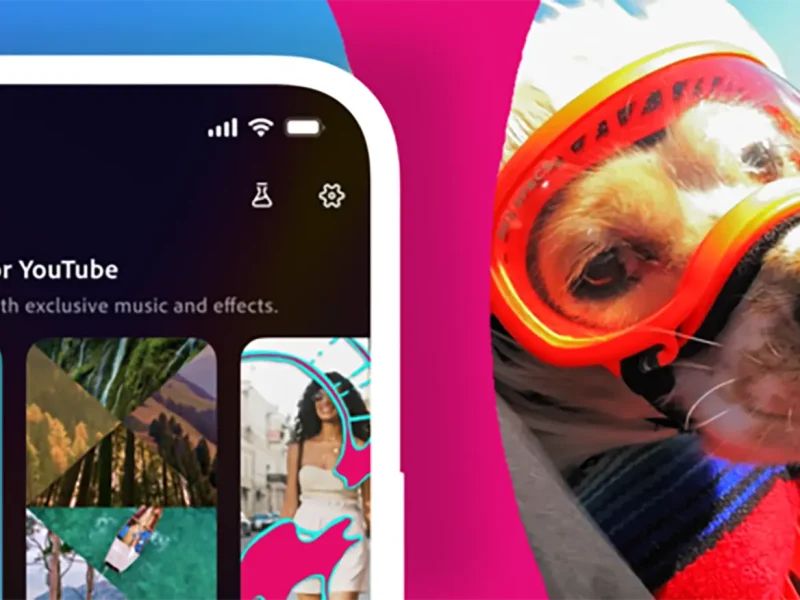AR Beauty Filters have transformed the way brands engage with their audiences. Leading this revolution is Sophie Katirai, a self-taught AR filter creator whose viral beauty filters are being worn by the world’s top celebrities and influencers. A bit of social recognition clearly goes a long way – with Katirai not only being appointed as an official Snapchat filter creator but also becoming the go-to filter guru for leading international brands such as Nars Cosmetics, Universal Pictures, and Huda Beauty.
Impressive resume aside, how did Katirai actually do it? Is the workload harder than it seems? Is she actually making money off of it? To answer these questions, Katirai exclusively sits down with ITP Live and reveals what it really takes to become a top AR filter creator.
Go Big or Go Home
Katirai had always been fascinated by AR filters: with a background in both graphic design and makeup, Katirai decided to bite the bullet and spend 4 to 8 hours a day learning Spark AR – a platform that allows creators to build immersive AR experiences:
“After being in its beta-phase, Spark AR finally launched to the public – allowing everyone from designers to developers to create and publish their own Spark AR filters and effects on Instagram. Having always wanted to learn, I decided to dedicate 4 to 8 hours per day learning the ins and outs of the platform. Learning the basics was quite easy and intuitive. How good you get – however – really depends on your level of AR knowledge, your creative ability, the amount of time you’re willing to put in, and what other skills and software knowledge you already have. For example, if you know how to code-in animation, that’s a definite plus”.
While exploring this new-found hobby, Katirai noticed that hardly any creators were creating realistic AR beauty filters that truly flattered the human face. Not one to shy away from a market opportunity, Katirai used her dual background to recreate her real-life makeup looks through Spark AR’s platform:
“It’s why I initially got noticed. There weren’t many beauty creators or artists creating filters: at the time, it was only developers with a technical background. No one had a background in makeup – which meant that no one knew where to correctly place or blend different eyeshadow shades or what part of the cheekbone was best to place contour”.
And noticed she was indeed. But it wasn’t just a gap in the market that pushed Katirai to AR filter stardom. It was also her direct approach to sourcing clients – which ultimately led to her getting noticed by none other than Kylie Jenner:
“In early January 2020, I saw Kylie post an Instagram story that promoted her new Kylie Cosmetics Stormi Collection – which featured a beautiful, colored butterfly design. I loved the look so much that I decided to recreate it as a filter. I spent 8 hours straight designing and then animating the butterflies while also taking makeup inspo from Kylie’s makeup artist Ariel. After I finished, I immediately put it up on my story and left comments on both Kylie and Ariel’s instagram posts. That’s how Kylie and her team discovered me”.
With her efforts rewarded, Katirai’s ‘Stormi Butterfly’ filter was officially adopted by Kylie Cosmetics. Shortly afterwards, the filter blew up on Instagram – with everyone one from Bella and Gigi Hadid to Dua Lipa, Rita Ora, Billie Eilish, Cardi B, Winnie Harlow, and Emily Ratajkowski dawning the ‘Stormi Butterfly’ filter on their stories.
The viral success of Katirai’s work led to additional AR filter collaborations with Kylie Cosmetics – most notably the creation of the ‘Kylie Stole Xmas’ filter for the Kylie Cosmetics Kylie x Grinch collection.
The Domino Effect
Thanks to the recognition of her work by Kylie Cosmetics, Katirai was able to unlock a door to additional opportunities – with many global brands beginning to take notice of her AR beauty expertise:
“In the beginning, things were quite slow since know one really knew about my filters. When Kylie and a bunch of other celebrities started to use my filters – it was a game changer for me. My inbox started getting flooded: brands were asking to collaborate. Celebrities were asking to collaborate. Everyone loved it”.
Those unfamiliar with Spark AR would most likely assume that Katirai’s income rose in direct proportion to the number of Instagram users using her filters. Unfortunately, this was not the case. In fact, Instagram doesn’t pay AR filter creators at all:
“At the moment, there is no monetization scheme set up for AR filter creators on Instagram. Although it would make sense to pay creators – especially those whose effects and filters are widely used and saved – it’s just not a thing”.
Fortunately for Katirai – her inbox full of collaboration requests more than makes up for Instagram’s lack of creator funding. Her brand collaborations include Nars Cosmetics, Universal Studios, Iconic London, Huda Beauty, and Patrick Todd Cosmetics as well as an exclusive influencer collaboration with social media star Loren Gray.
“For Nars, I made a filter for each collection that they were launching at the time: one for their new Nars Climax Extreme Mascara, one for the Nars Claudette collection, and one for their upcoming Nars airmatte collection. Each individual filter took one month to work on since Nars has a very organized and multi-level way of doing things”.
How does Katirai go about pricing her services? The answer: it depends.
“After a brand shares their campaign expectations with me, I make sure to outline my pricing structure quite clearly. What I charge depends on a lote of factors. For example, how long the whole filter design and development process will take. Or if we need to input custom code that goes beyond the filter-making capabilities provided by Spark AR. So It’s really a mixture of both time and complexity for me”.
Spark AR: The Design Process
Although Spark AR has a lot of features and capabilities – providing users everything from asset library to advanced customization controls – Katirai still uses other third-party tools and software to create her signature AR beauty filters:
“I create most of my art on photoshop: this includes the actual makeup look and makeup textures. I often spend a lot of time going back and forth on the correct color, shape, hue, etc. After I’ve designed the makeup look, I need to take that 2D design and lay it over a 3D model. The coding – which I had to learn myself – comes last. Again, I can do a lot of it on Spark AR but there are some client requests that require outside code or animation to be integrated in”.
But how long does it take – on average – for Katirai to create a single filter? Again, it depends.
“For Kylie Cosmetics, I finished the ‘Stormi Butterfly’ filter in less than a day. For the ‘Kylie Stole Xmas’ filter, I was super excited so I worked non-stop day-and-night on it. It took me around 1-2 days maximum. However, other client projects with brands can sometimes take multiple weeks or months due to the need for custom elements and the constant back and forth review cycles”.
Moreover, Katirai gives examples of requests that can slow down the filter development process:
“ Sometimes I need to do things beyond what Spark can give me. This is where the custom code comes in. For example, text is not allowed in Spark but I needed to integrate custom code to make sure a brand’s logo would remain fixed on the user interface. A lot of the time – for animations – I have to do it outside of Spark as well. For example, through photoshop, code, or 3D software. Sometimes – I can use custom code to trick Spark into doing what I want”.
Lastly, Katirai notes a surprising element that helps make her AR beauty filters so realistic: her own beauty brands.
“It’s quite interesting how much inspiration my other businesses have given me. For example, I own a colored contacts brand. When creating my colored eye filter on Instagram, I asked my contact lense manufacturer to send me pixelated images of the lenses via Photoshop. That really helped design a colored eye filter that mirrored a real eye. It’s the same story for my lash filters. I own a lash brand so when I started creating the filter, I worked very closely with the factory to design lashes exactly the way I wanted them to”.
Closing Thoughts
With less than 2 years of AR filter experience under her belt, Katirai has built up quite an impressive portfolio of clients. In this new Gen-Z age, Katirai is a prime example of a modern-day success story – expertly combining self-taught, online learning with a skillful manipulation of social media and the influencer marketing landscape.




